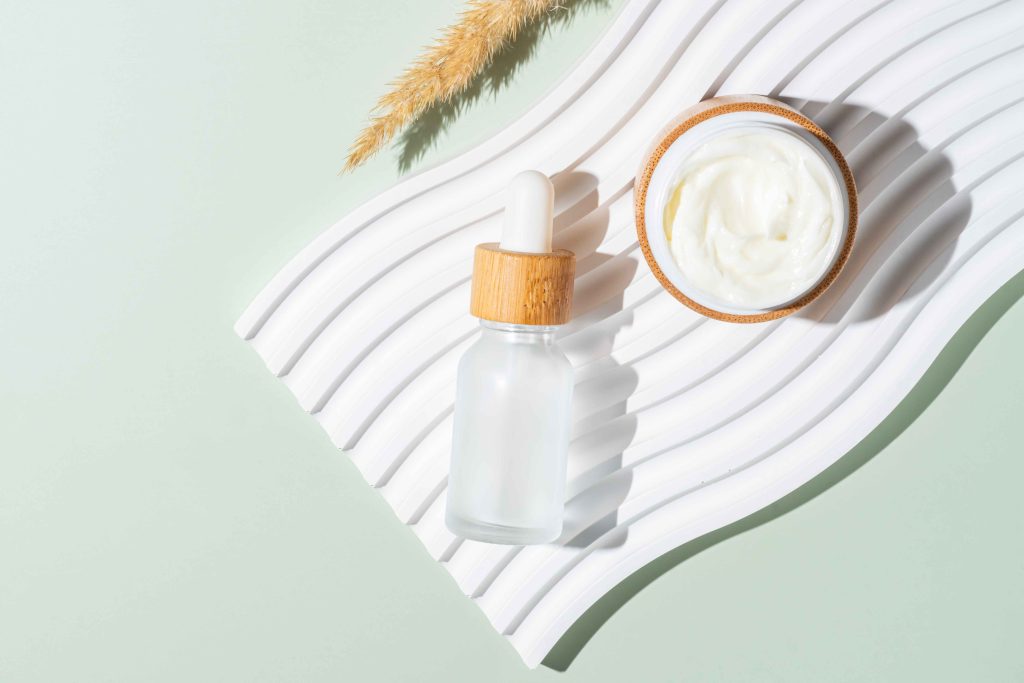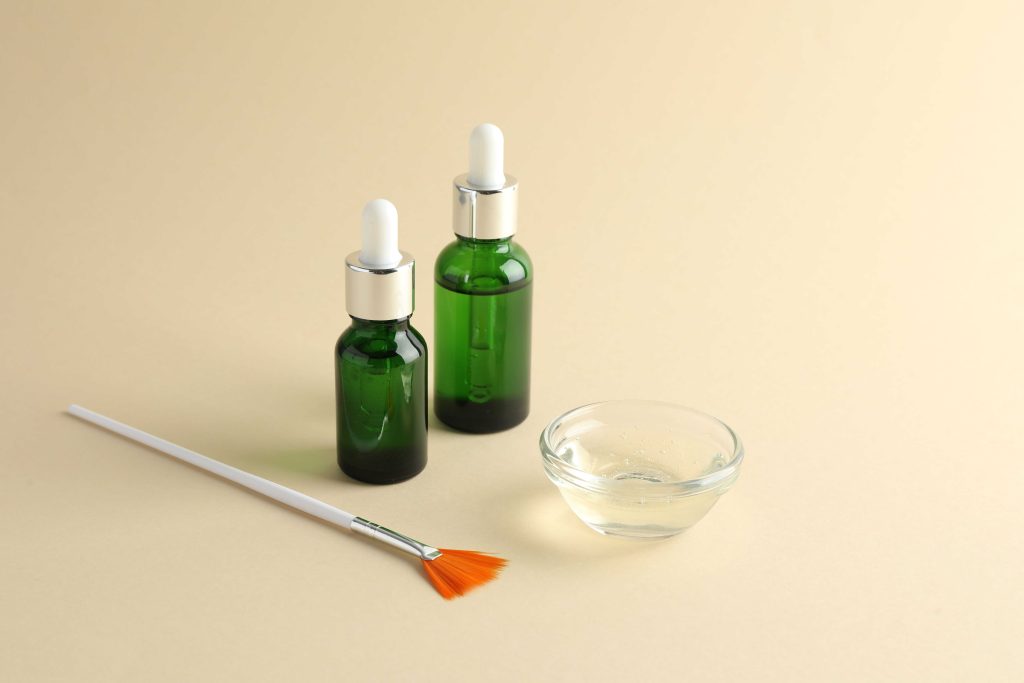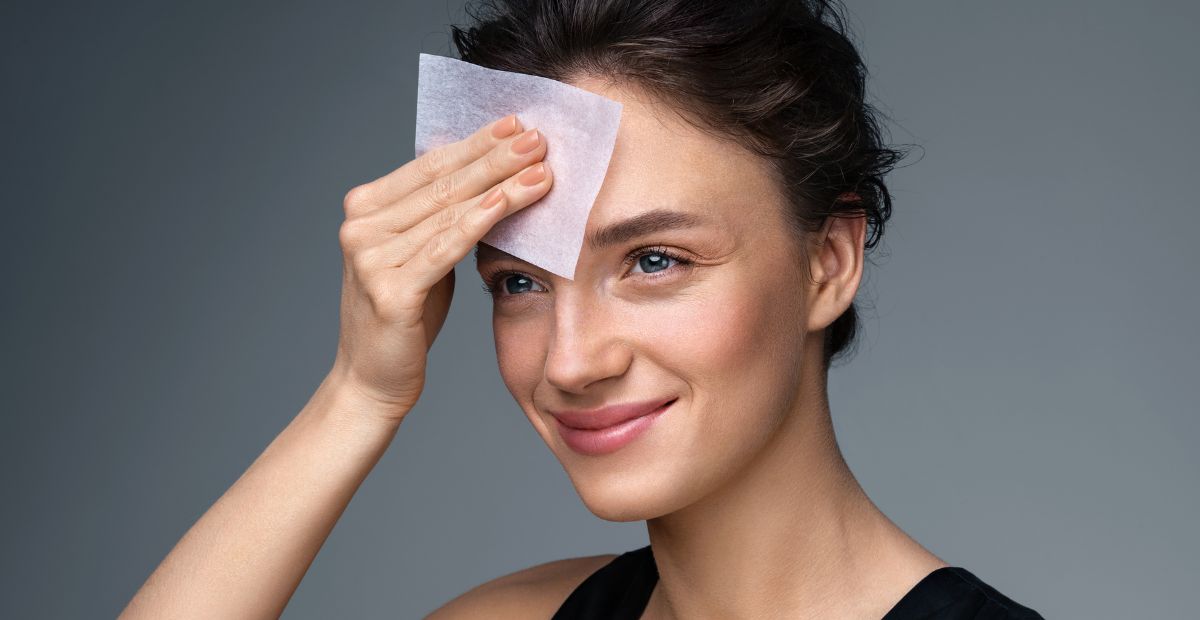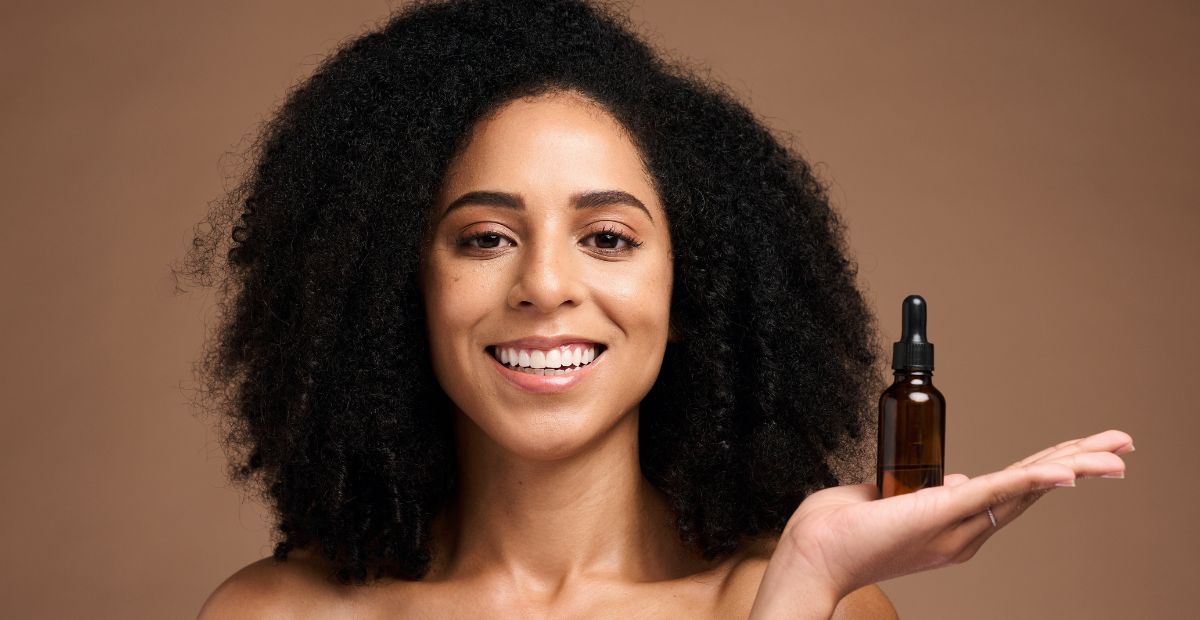Fall Skincare: the Easiest Tips to Help Your Skin Adapt
Onskin Content Team
Your guides through the skincare chaos

As fall has arrived and Sweater Weather is blasting in our office, we asked our team what fall means to them. Some are excited to finally show off their new coats, while others are dreading the upcoming gloom. And as for our skin? Let’s just say fall isn’t the easiest season to navigate (more on that later). That’s where fall skincare comes in to save the day!
To help make the summer-to-fall transition smoother for your skin, our experts have shared the best insights for adjusting your routine and understanding how your outer layer changes with the new season. We’ll also cover the million-dollar question—“Should I wear SPF when it’s cloudy?”—so keep reading!
Why Fall Skincare Is Even a Thing

Just like our mood can depend on the weather, the skin is very much in sync with the surrounding environment. As fall takes over from summer, temperatures and humidity typically drop, so the skin has less moisture to trap from the air. As a result, you may notice that your outer layer is drier, fine lines are more visible, and your skin acts out more than usual. Add to that the indoor heating system, which keeps the air warm but also robs it of moisture!
Beyond the temperature decrease, it’s often the case in fall that the temperature decreases (and you pull out your sweater collection) and the next day it spikes again (Wait, I already packed away the summer stuff!). The skin isn’t a fan of such rollercoasters, just like you aren’t.
Seems like a lot on your skin’s plate? You bet!
Fall Skincare: Nourishment & Hydration Are Keys

How do you care for your skin during these winds of change? All in all, during the autumnal period, your skin should enter the nourished and happy even more than usual era. To achieve this, focus on:
- Gentle foaming cleansers instead of gel ones (which may strip your skin barrier of natural lipids);
- Moisturizers with richer textures in place of lightweight options and hydrating serums and oils. Look for products containing ceramides, shea butter, niacinamide, vitamin C, plant extracts, and other moisture-boosting ingredients;
- Keeping the air in your area moisturized—the easiest solution is getting a humidifier, which will help your skin absorb hydration naturally.
Now you might be thinking, “These tips seem too… broad?,” and you’re right—these are just some staples of fall skincare to start switching up your routine. Every skin type has its own needs, so choose products that not only claim to be hydrating but also suit your specific skin type. Consider using the OnSkin app to check if a product will benefit your skin—this quick scan can save you from getting a product that was never your skin’s match in the first place.
And while you’re focusing on the right picks for your face and neck, don’t forget that your hands, heels, and elbows need love too. Regularly applying moisturizer to these areas will help keep them baby soft.
Hydrate from Within

Although nothing screams fall quite like a cinnamon cappuccino or latte, caffeine can quickly dehydrate your body, so remember to drink water regularly. This is especially important because we tend to feel less thirsty from September to November than in summer. Overall, avoid relying solely on coffee, tea, or soft drinks to maintain your body’s hydration.
Peel Good This Time of Year

Peels are great for removing dead skin cells and smoothing rough textures—and since skin turnover slows down in fall, they’re especially beneficial during this time. And you know what else is great? Dermatologists say the season is the perfect time for peels because reduced sun exposure lowers the risk of hyperpigmentation and promotes faster, smoother healing. So it’s a win-win!
If you’re tempted by the benefits of peels but still worried about how your skin might react, the best strategy is to choose products formulated for your skin type. For oily or combination skin, high-percentage acid components (like salicylic acid, glycolic acid, mandelic acid, lactobionic acid, or others) can help unclog pores and even out skin tone without likely disrupting the skin barrier. However, for dry and normal types, acids in high doses can be too harsh even with good intentions, so it’s important to ensure the percentage of acid is clearly stated on the label. For all skin types, especially sensitive and dry skin, opt for products that are free from fragrance and alcohol.
All in all, to maximize the results from at-home peels, don’t overuse them, follow the manufacturer’s recommendations (they know what they’re doing), and moisturize your skin after each peel ritual—then you can expect your skin to glow even more this fall.
No Sun, No SPF?

That sounds intuitively right, yet dermatologists beg to differ—although sun activity isn’t as strong as in summer, UV rays still reach your skin, even when it’s cloudy. Look up the UV index for your location online to see if special sunscreen protection is necessary. The higher the number, the stronger the rays, and the higher the SPF you’ll need.
On top of that—and not to scare you—studies from the Skin Cancer Foundation show that UV ray exposure adds up over time. This means all the sun damage your skin has already experienced can potentially lead to melanoma and other serious skin issues.
Fall Skincare: the Takeaway
With just a little extra care, your skin can continue living its best life—nourished and radiant, even on the gloomiest days. Fall in love with yourself all over again this season!
FAQ
-
Where do I start with OnSkin?
Download the app and think of a product you’d like to know more about. Then, go to the main screen and choose how you’d like to get the info —by manually looking it up in the search bar, by scanning its barcode, or by simply taking a picture of the packaging. Once you’ve done any of these, you can see how safe the product is and if it suits your skin or hair (if this analysis is available).
-
What is Safety Rating, and how is it calculated?
In OnSkin, we base product rates on ingredients. Each is closely studied by our medical team and then evaluated. This way, each product gets a score from 0 to 100, with 100 as the safest level.
Safety Levels
- Excellent (76–100)
- Good (51–75)
- Not great (26–50)
- Bad (0–25)
These scores are backed by the latest scientific studies. You can find links to the resources we’ve used on each ingredient page. To assess the safety of product ingredients, we evaluate them according to the following parameters/criteria
- Endocrine disruption risk / Reproductive toxicity
Indicates the probability of mimicking, blocking, or interfering with the body hormones.
- Сarcinogenicity
Measures the potential risk of inducing cancer.
- Allergy risk
Estimates the probability of an allergic reaction.
- High concentration alert
Determines the risk of being unsafe in certain amounts.
-
What is Skin Match?
Based on the info you input about your skin type, age, skin care goal, and other “settings,” OnSkin checks how well a product is tailored to your unique skin needs — it’s basically like a dermatologist helping you find the right products, minus the fees and the long wait. The product you’re checking might be labeled as It’s a match!, Hit-or-miss, or Not a match for you. The app also detects ingredient groups such as Anti-acne, Anti-inflammatory, Moisturizes, May be drying, Comedogenic, and others — by tapping one, you see exactly what ingredients from this or that group are in the product.
-
I seem to have a problem with using the app. Who should I contact?
Please reach out to us at [email protected], and we’ll carefully look into your issue. Your ideas for improving the app are also very welcome!
-
Do you have an Android version?
Not yet! Hey Android users, we hear you, and we're thinking about making an Android version, but we haven't started the development yet.
Tracker Sent!
It’s on the way to your inbox.




